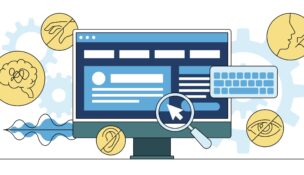AI vs. Traditional: Which is the Best Approach in Recruitment
With proper application, AI can result in an evolutionary leap in recruitment strategies, benefiting candidates and recruiters alike. But, you still need that human touch.
Ken Crowell //January 18, 2024//


AI vs. Traditional: Which is the Best Approach in Recruitment
With proper application, AI can result in an evolutionary leap in recruitment strategies, benefiting candidates and recruiters alike. But, you still need that human touch.
Ken Crowell //January 18, 2024//
Recruiting challenges change constantly, which means you need creativity to stay ahead of the curve and ensure efficient hiring. However, traditional methods, while tried and tested, can struggle to keep pace with the dynamic hiring needs of today’s world. Enter AI recruiting.
From sourcing to candidate assessment, this promising method brings various tools and technologies that help streamline recruitment processes. It can sift through vast volumes of data in real-time, expediting top talent searches and fine-tuning selections based on your parameters.
As such, it isn’t surprising that 45% of companies utilized AI recruitment tools in 2023.
READ: How to Welcome AI in Your Recruiting Process
As businesses shift to AI, the debate between modern and traditional methods intensifies. Each approach boasts its strengths, but they share the same goal: securing the best talent swiftly and effectively.
AI vs. traditional recruitment
The battle between these two methods revolves around efficacy, personal touch and adaptability. AI, with its data-driven precision, battles against the human-centric approach of traditional methods. Here are the strengths and weaknesses, and how they fare in critical recruitment domains.
Speed and efficiency
AI recruiting tools can swiftly scan through resumes, identify patterns and shortlist candidates in a fraction of the time it takes traditional methods. Automated processes expedite initial screenings, accelerating the overall hiring timeline significantly.
Conversely, traditional methods rely on human judgment, often prolonging the process due to manual candidate evaluation and decision-making.
Candidate experience
Traditional methods tend to excel in providing a more personalized candidate experience. Human interactions, through customized communication and tailored processes, contribute to a more engaging and empathetic candidate journey, which is essential for businesses trying to appeal to top talent.
However, AI’s advancements in natural language processing (NLP) and chatbots attempt to bridge this gap, offering instantaneous responses and personalized interactions at scale. Though these AI tools are not quite at the level of consistently passing as humans, developers are constantly improving their function, which may only be a matter of time.
READ: Unlocking the Power of Conversational AI — 6 Game-Changing Applications for Your Business
Bias mitigation
Hypothetically, AI promises to minimize bias in recruitment decisions by basing assessments on data rather than subjective human judgment. However, biases can seep into AI algorithms through training data or flawed equations, leading to unintended discriminatory outcomes. After all, humans tend to influence their creations, often without intent.
Traditional methods, though prone to inherent biases, often have human intervention that can mitigate them to an extent.
Adaptability and flexibility
AI evolves rapidly, constantly learning and adapting based on data patterns and user interactions. This adaptability continuously refines and optimizes processes. Contrastingly, traditional methods may need help to swiftly adapt to changing trends, technology or sudden shifts in the job market.
AI can be particularly helpful when onboarding remote hires since AI-analyzed data can help depict special skills you otherwise wouldn’t have because of the lack of face-to-face interaction — integral when observing an applicant’s soft skills and personal qualities.
READ: AI in the Workplace — A Roadmap For HR Professionals
Cost considerations
Investing in new technologies and tools will almost certainly come with a steep initial price tag. For smaller businesses, it can even be prohibitively expensive. However, in the long run, efficiency gains and reduced time-to-hire can outweigh the initial costs.
Conversely, traditional methods may be more cost-effective upfront, but hidden costs associated with prolonged vacancies, higher turnover rates and increased labor requirements might overshadow these apparent savings.
The Hybrid Model
In reality, the ideal approach is most likely somewhere between these two approaches — a symbiosis that capitalizes on the strengths of both AI and traditional recruitment. Hybrid models are most likely to become greater than the sum of their parts.
AI’s speed and precision near-instantly parses applications based on your minimum requirements and sort those that pass for human intervention.
Your hiring professionals can then add the human touch to make candidates more engaged and your company more relatable to prospects. A person can also make the final decision of hiring based on AI data and the subjective qualities that machines can sometimes struggle to detect.
This last step is for candidates who may appear perfect on paper but may have some less concrete qualities that your company finds undesirable.
Finding the middle ground
Adapting AI in recruitment may seem like a long shot, but it isn’t without basis. Because of the continuous innovations in AI technology, businesses are seeing how they can use it in a plethora of business processes, including recruitment. With proper application, a hybrid model can result in an evolutionary leap in recruitment strategies, benefiting candidates and recruiters alike.
Instead of viewing AI as a replacement for traditional hiring practices, companies should see AI for what it is — a revolutionary tool that offers unprecedented efficiency that thrives in collaboration with human judgment and empathy.
 Ken Crowell is the Founder and CEO of EmployTest. EmployTest has helped more than 7000 corporate and government customers of all sizes in every US state and Canadian province, as well as more than 17 countries across six continents. EmployTest administers more than 60,000 tests to job applicants every year.
Ken Crowell is the Founder and CEO of EmployTest. EmployTest has helped more than 7000 corporate and government customers of all sizes in every US state and Canadian province, as well as more than 17 countries across six continents. EmployTest administers more than 60,000 tests to job applicants every year.
























